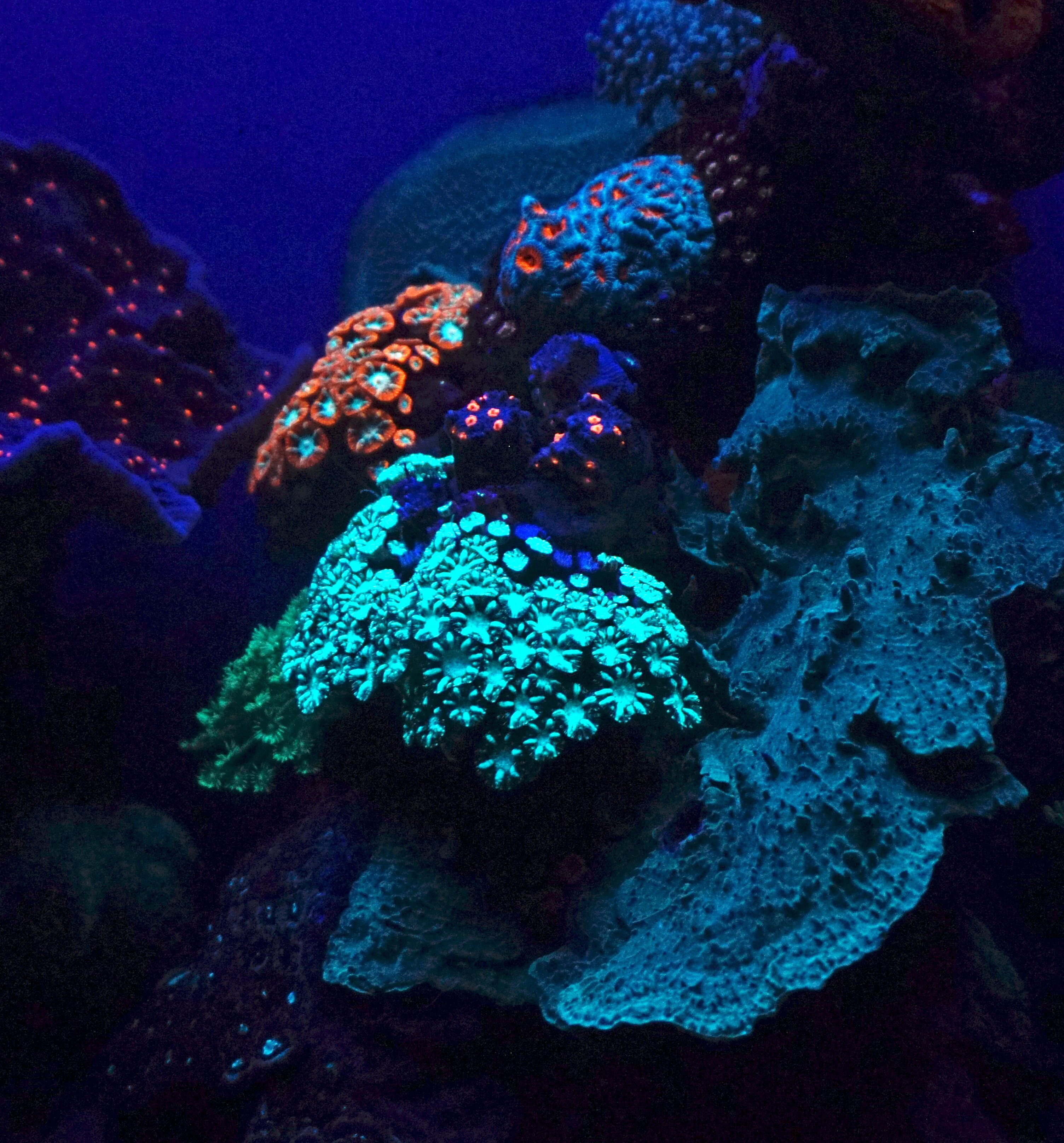Corals are extremely fascinating creatures. These marine invertebrates are very important ecosystem engineers that can create huge coral reefs, but they also have lots of other interesting facts. I could probably several different posts about the cool features of the corals (maybe I will in the future), but in this post I’m going to stick with an interesting phenomena; their ability to become fluorescent.

A picture showing several different species of corals that are fluorescent. Image by Tiia Monto, posted with the Creative Commons Attribution-Share Alike 3.0 Unported license.
Before we dive into the details of why the corals are able to fluorescence, we need to take a quick look at what exactly a coral is, and what it’s not. The corals are technically small invertebrates, and a single coral-animal is called a polyp. A coral is lots of polyps that create a colony together, and this colony creates a skeleton together. In addition to the polyps a coral consists of an algae cell, and each polyp has one or more algal cells inside them. These algae cells provide the coral with energy by using photosynthesis, which creates energy from light waves.
Understanding what a coral is can be pretty confusing, but the above paragraph is the most of it. I hope it makes some sense to you! Anyway, let’s look at why some of them can become fluorescent. It’s important to remember that only some corals can glow fluorescent, while most coral species can’t.
How the shallow reef corals use fluorescence as a sunscreen
The sunrays can be real intense for both plants, humans and corals, and this is one of the reasons why they become fluorescent. It acts as a sunscreen to prevent the coral from overheating during the light of day. By doing this the coral will keep a bit cooler than if it had not been shifting the light from sunlight into fluorescent light. This allows it to emit some of the light energy back into the environment again instead of storing it all as heat energy inside the coral.
If these corals had not been able to protect themselves against the sunrays in this manner, they could potentially overheat, which could kill the algae that lives inside the polyp. This is pretty much what happens when we have a mass coral bleaching due to global warming, and when this happens not even the fluorescent light can save them. This is a big problem, but a topic for another post.
A fluorescent light can help the sun rays penetrate deeper into the cell
Corals at deeper reefs don’t really need sunscreen, but scientists have found fluorescent corals in these spots as well. The deepest ones have been found at roughly 170 meters deep, which is only 30 meters shy of the 200m maximum light penetration zone in the ocean, but only a very small fraction of the sunlight gets this deep.
Scientists have been questioning the use of the fluorescence at these deeps for a long time, but a recently published paper shed some light on the subject. At these corals we see another use for the fluorescence entierly; it allows the sunlight to penetrate deeper into the algae cell, which gives it more energy to use for photosynthesis.
When the corals uses fluorescence to change the light from deep blue (which is the only color of the rays found at these depth levels) into red or orange the photosynthesis process is given more energy. This gives the entire coral more energy to spend on surviving, growing and reproducing, and the researchers also found out that this increased their probability of survival.
Thanks for reading!
I hope it made some sense to you, and hopefully you enjoyed my post. Feel free to comment below, and I'll do my best to answer it!
About the author
Hi, I’m @valth! I live in Norway with my wife, our baby, and our two dogs; one of which is seen wearing a bow tie in the profile picture!
I am very passionate about nature and biology, and have been studying ecology for a few years now. My passions are mostly within conservation biology, mycology (the studies of mushrooms), botany, animal behavior and general microbiology. I really enjoy both the theoretical aspect, as well as the more practical aspect of biology, and I spend about as much time in front of biology textbooks as I do spend on finding and identifying plant, mushroom and animal species in the forests.
Make sure to hit the big follow button above to go to my profile and follow me! This will make sure all of my posts end up right in your feed, and you can get your daily dose of biology news without any hassle :)

